The National Assembly of Vietnam ratified a new Law on Intellectual Property on June 16, 2022 (the Amended IP Law), marking the most significant amendment of the country’s primary legislation for intellectual property since 2009. The Amended IP Law (with the exception of a few provisions that will be delayed) took effect on 1 January 2023.
While many aspects of the law have been changed (80 out of 222 articles of the previous IP Law have been amended, and 12 new articles have been introduced), the overall impact of these changes is relatively subtle, serving primarily to bring Vietnam’s IP law in line with the country’s commitments in international treaties and trade agreements, and to provide further detail and clarity to vague provisions.
Some notable changes include:
Protection of sound marks
To fulfil Vietnam’s commitments under the Comprehensive and Progressive Agreement for Trans-Pacific Partnership (CPTPP), the Amended IP Law introduces the protection of sound marks as trademarks. However, to facilitate the examination of these non-traditional marks, the law provides that sound marks must be presentable in graphical representations.
Sound marks comprise of ‘copies [in whole or part] of copyrighted works, unless with consent from the copyright holders’ and can be refused under a supplemental provision, which is expected to better secure copyright in broad terms.
‘Bad Faith’ becomes an officially available ground for opposition and invalidation
For the first time, the Amended IP Law recognises an act of ‘bad faith’ as an independent legal ground to oppose or invalidate a trademark application or registration. The lack of bad-faith grounds has long been an obstacle to fighting trademark squatters, especially for trademark holders without registrations in Vietnam.
Definition of well-known mark
The definition of a well-known mark is changed to refer to a mark that is ‘widely known by the relevant sectors of the public in the territory of Vietnam’, as opposed to the previous definition: ‘widely known by consumers throughout the territory of Vietnam’. This more focused definition is in line with international standards, and improves the chances of trademark owners to have their marks recognised as well-known. The Amended IP Law also clarifies that well-known status must be acquired before the filing date of a later trademark to serve as grounds for refusal.
New grounds for termination of registered marks
The Amended IP Law adds two new grounds for termination of the validity of a registered trademark: (i) the registered trademark has become the common (generic) name of goods or services bearing that mark; and (ii) the use of a registered trademark by the owner or a person authorised by the owner misleads consumers as to the nature, quality, or geographical origin of the goods or services.
Secret prior art in patent examination
A significant amendment to Clause 1, Article 60 of the Amended IP Law on the novelty of inventions is to broaden the scope under which an invention can be considered to have lost its novelty. For the first time in Vietnam, ‘secret prior art’ – a patent application with an earlier filing date or priority date but published on or after the filing date or priority date of an examined patent application – is introduced as a prior art document.

In the diagram above, at the time when application A2 is filed, a secret prior art A1 has already been filed but not yet published, making it inaccessible to the public. At this point, only the A1 applicant and the IP Office are aware of the A1 application.
Under the current provisions of the 2005 IP Law, as amended in 2009 and 2019, the A1 patent application was not eligible to be a prior art document when assessing the novelty of A2. However, based on the ‘first-to-file principle’ and the principle of priority, the IP Office has still had other approaches to bar the patentability of an A2 patent application if there is such an A1 application. By supplementing the provisions of Article 60.1(b) of the Amended IP Law, the A1 patent application can now officially be considered ‘secret prior art’ to assess the novelty of A2. As a result, this amendment provides a more legitimate, direct, and comprehensive tool for assessing novelty using ‘secret prior art.’
From the explanation of the IP Office, ‘secret prior art’ is not limited to the case where the applicants of A1 and A2 are different, in other words, A1 and A2 can be identical. In addition, application A1 must be filed in Vietnam to be a ‘secret prior art’. Finally, one can see that the provision on the use of ‘secret prior art’ applies only to the assessment of novelty of an invention, not to the degree of inventiveness.
New Grounds for Patent Invalidation
Under the current IP Law there are several grounds on which a patent can be invalidated or partially invalidated. An English translations of Article 96 reads as follows:
Article 96. Invalidation of protection titles
1. A protection title is entirely invalidated in the following cases:
a) The applicant files an application for trademark registration in bad faith;
b) The application for invention patent is filed in contravention to the regulations on security control over invention set out in Article 89a of this Law;
c) The application for invention patent concerning an invention that is directly created based on genetic resources or traditional knowledge about genetic resources but does not disclose or incorrectly discloses the origin of the genetic resources or traditional knowledge about genetic resources in such application.
2. A protection title is entirely or partially invalidated if the entire or part of such protection title fails to satisfy the provisions of this Law on registration rights, protection conditions, application amendment and supplementation, invention disclosure, “first to file” principle in the following cases:
a) The applicant does not have the right to register and is not assigned the right to register an invention, industrial design, layout design or trademark by the person having the right for registration;
b) The subject matter of industrial property fails to satisfy the protection requirements set forth in Article 8 and Chapter VII of this Law;
c) The amendment, supplementation to the application for registration of industrial property broaden the scope of the subject matters disclosed or mentioned in the application or change the nature of the subject matters in the application for registration;
d) The invention is not disclosed fully and expressly to the extent that based on which, the persons with ordinary knowledge in the respective art can practise such invention;
đ) The invention is granted a protection title beyond the scope of disclosure in the original specification of the application for invention registration;
e) The invention fails to satisfy the ‘first to file’ principle set forth in Article 90 of this Law.
In this Article, the term ‘invention’ includes both ‘invention’ and ‘utility solution’.
The provision on security control is mentioned in the current regulations, but it does not clearly specify the objects of such provision. The Amended IP Law clarifies that this affects ‘Inventions in technical fields that have an impact on national defence and security, created in Vietnam, and under the registration right of an individual who is a Vietnamese citizen and permanently resides in Vietnam, or of an established organisation under Vietnamese law’. More specific guidelines, however, are still needed to accommodate cases such as inventions partially created in Vietnam, jointly owned by Vietnamese and foreign entities, and so on.
Although the grounds relating to disclosure, amendment of a patent description, and the first-to-file principle are mentioned under the current law as requirements during the examination of a patent application, they have never been recognised as a basis for patent invalidation.
Administrative Sanctions Retained
Early drafts of the Amended IP Law had removed administrative sanctions from the list of ways to protect IP rights. This was met by strong negative feedback from scholars and legal practitioners and, unsurprisingly, the National Assembly agreed to keep administrative sanctions in the promulgated law.
Outlook
Although some provisions remain unclear, and will require further detail and guidance in subsequent legal instruments, the Amended IP Law demonstrates Vietnam’s commitment to fair and transparent protection of IP rights, and moves the country closer to international standards and practices.




